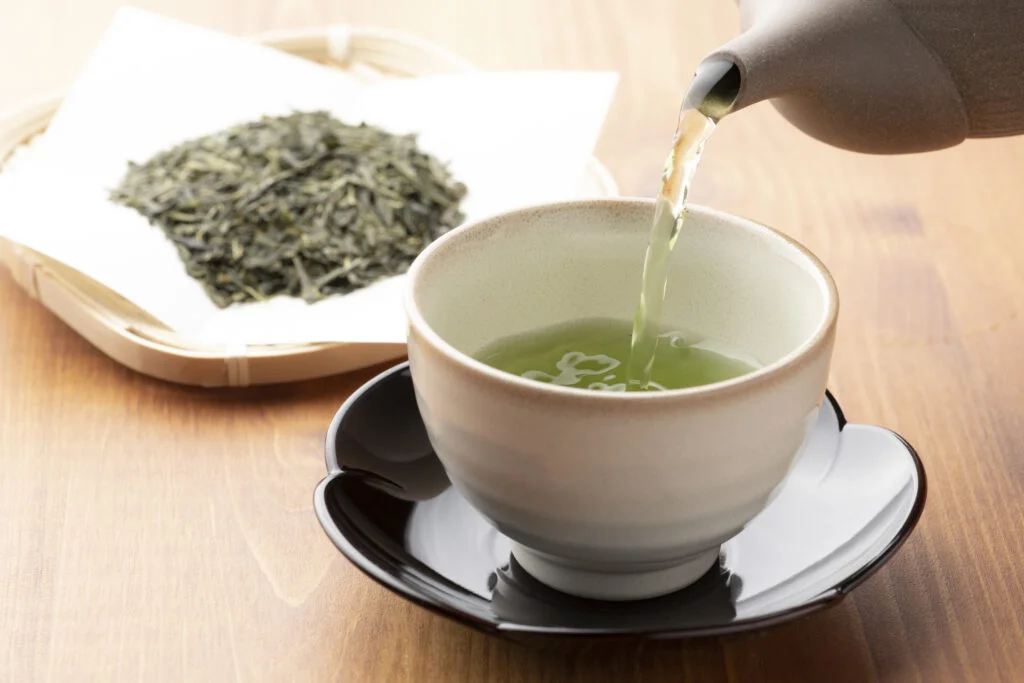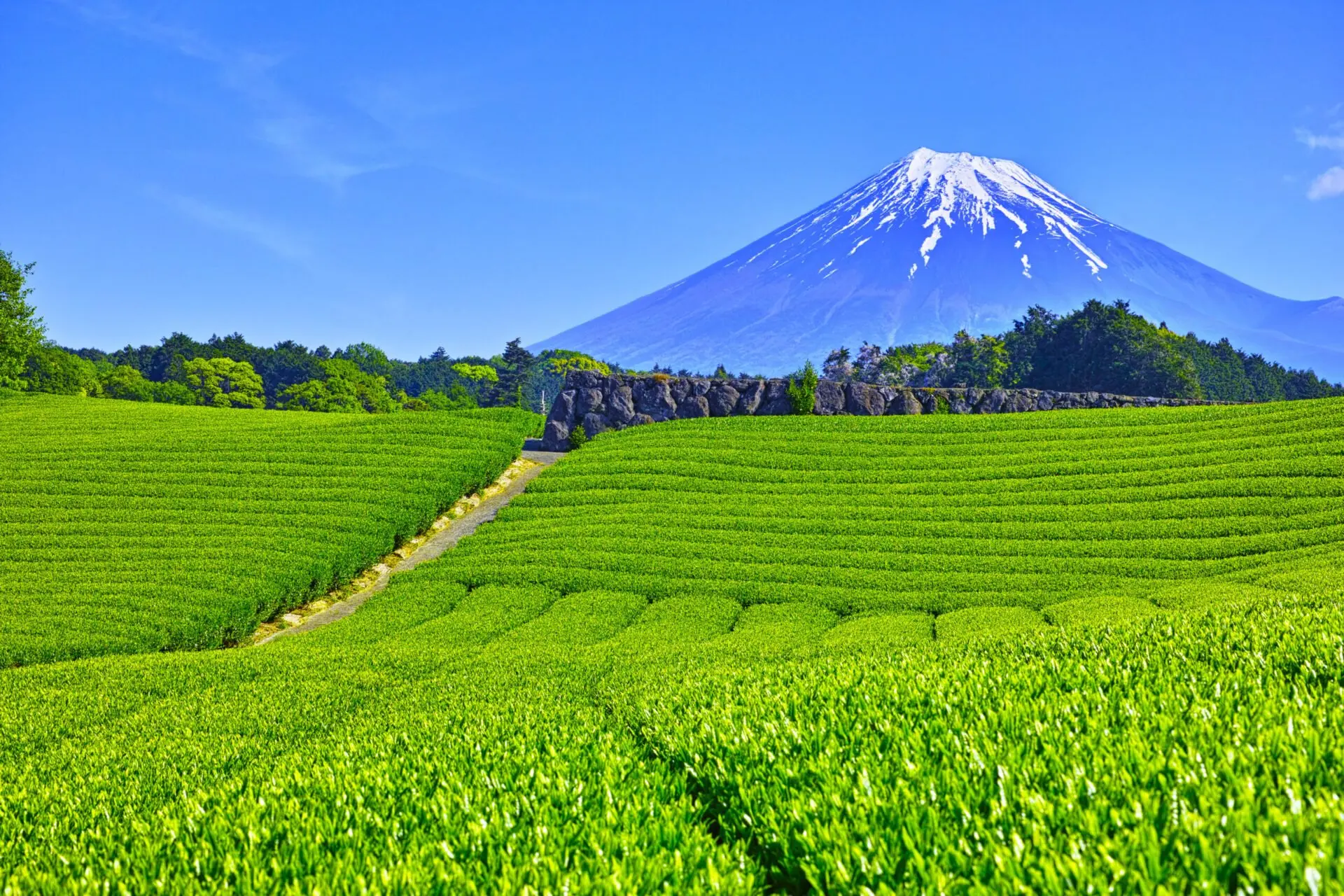The Secret Health Power of Green Tea: A Source of Comfort and Vitality
Green tea, deeply rooted in Japanese culture, holds a mysterious power to soothe our minds and bodies while providing energy. Today, we’ll explore the perfect combination of green tea and wagashi (Japanese sweets), as well as its health benefits.
Green Tea and Wagashi: A Perfect Combination Born from Japanese Tradition
The inseparable relationship between green tea and wagashi blossomed during the Azuchi-Momoyama period when Japanese tea ceremony culture flourished. The exquisite harmony between the bitterness of tea and the sweetness of wagashi has since satisfied the delicate Japanese palate as the ultimate combination.
The refined sweetness of wagashi softens the astringency and bitterness of green tea, enhancing its flavor. Meanwhile, the aroma and taste of green tea highlight the subtle flavors of wagashi. This synergistic effect has captivated Japanese people for centuries.

Types of Green Tea: From Sencha to Matcha
Green tea comes in various types. Let’s start with sencha, the most popular green tea in Japan.
Sencha is made by steaming, drying, and rolling tea leaves into needle-like shapes. It has a refreshing taste and is enjoyed daily. To learn more about pairing sencha with wagashi, check out our detailed guide here.
Gyokuro is made from tea leaves grown under shade, resulting in a rich, umami flavor.
Matcha holds a special place among green teas. It’s made by grinding shade-grown tea leaves into a fine powder. As you consume the entire leaf, it’s highly nutritious.
Hojicha is green tea roasted at high temperatures, offering a unique, toasty aroma.
Each type of green tea has its own flavor and aroma, pairing differently with wagashi. For example, the light sencha pairs well with subtly sweet higashi, while rich matcha complements the refined sweetness of nerikiri.
Green Tea’s Nutritional Components: Catechins and Their Companions
Many of green tea’s health benefits stem from its rich nutritional content, with catechins being the most notable.
Catechins are powerful antioxidants that help remove harmful free radicals from the body. They’re believed to aid in aging care and preventing lifestyle-related diseases.
Theanine is an amino acid that promotes relaxation. It may help reduce stress and improve sleep quality.
Vitamin C is another important nutrient in green tea, contributing to immune system enhancement and skin health maintenance.
Green tea also contains caffeine, which in moderate amounts can improve concentration and boost metabolism.
The combination of these components gives green tea health benefits beyond just being a beverage.
Health Benefits of Green Tea: Science Uncovers Traditional Wisdom
Modern scientific research is backing up the traditional belief in green tea’s medicinal properties.
Green tea’s antioxidant action may contribute to aging care and reducing the risk of cardiovascular diseases. Antioxidants, primarily catechins, are thought to help prevent various diseases by reducing oxidative stress in the body.
Studies suggest that regular green tea consumption may aid in weight management and metabolism boost. This is due to the action of catechins and caffeine, which can promote fat burning.
Theanine in green tea has been found to have stress-reducing and relaxing effects. In our stressful modern society, green tea might play a role in maintaining mental health.
Green tea also shows unexpected benefits for oral hygiene. Fluoride and polyphenols in green tea may help prevent cavities and periodontal disease.
However, these health benefits are based on moderate consumption. Excessive intake could have adverse effects, so balanced consumption is key.
Pairing Green Tea and Wagashi: A Harmony of Flavors
Pairing green tea with wagashi is the essence of Japanese food culture. By choosing the optimal wagashi according to the season and type of tea, you can enjoy a deeper world of flavors.
In spring, the combination of seasonal wagashi like sakura mochi or kashiwa mochi with fresh, crisp shincha is exquisite. In summer, cool sweets like mizu yokan or kuzukiri paired with cold tea are refreshing.
Autumn brings chestnut-based sweets like kuri kinton or persimmon-flavored treats, which pair well with mellow autumn teas. In winter, warm green tea with moist yokan or gyuhi warms both body and soul.
Different types of tea pair well with different wagashi: light sencha with subtly sweet higashi or dried sweets, while rich matcha complements the elegant sweetness of nerikiri or yokan. Finding your favorite combination is part of the joy of experiencing green tea and wagashi. For an in-depth exploration of the perfect harmony between matcha and wagashi, read our comprehensive article here.
How to Brew Green Tea: Tips for Enjoying the Perfect Cup
Brewing delicious green tea involves several key points. First, water temperature is crucial. For sencha, water around 70-80°C is ideal. Water that’s too hot can make the tea bitter.
The amount of tea leaves is also important. Generally, use 3-4 grams of leaves per cup, adjusting to your preference.
Steeping time greatly affects the flavor. For sencha, 30 seconds to 1 minute is usually sufficient. Steeping too long can result in bitterness.
When enjoying green tea with wagashi, it’s common to eat the wagashi first, then drink the tea. The lingering sweetness in your mouth enhances the tea’s flavor.
Seasonal enjoyment methods also exist. Try cold-brewed green tea in summer or slightly hotter water in winter to incorporate seasonal elements.
Global Appreciation of Green Tea: Japanese Flavor Crosses Oceans
In recent years, green tea’s popularity has spread worldwide, not just within Japan. Its recognition is growing yearly, especially with increasing health consciousness.
In Western countries, green tea is often considered a “superfood.” It’s highly regarded as a health drink due to its rich antioxidants and potential anti-aging effects.
Alongside the Japanese food boom, matcha-based sweets and drinks have gained popularity worldwide. Creative products like matcha lattes, ice cream, and green tea-flavored chocolates are continuously emerging.
Moreover, the culture of enjoying green tea with wagashi as part of tea ceremony is attracting attention overseas. It’s becoming popular among tourists as a way to experience traditional Japanese culture.
Thus, green tea has transcended being just a beverage to play a crucial role in spreading Japanese culture globally, comforting hearts and bodies of people worldwide.
Conclusion: Rediscovering the Charm of Japan’s Green Tea Culture
The combination of green tea and wagashi is one of Japan’s proudest food cultures. Its history is ancient, deeply rooted in our lives to this day.
Green tea contains various nutritional components, including catechins, and moderate intake may contribute to maintaining health. Its effects range from antioxidant action to stress reduction and metabolism promotion.
By enjoying the pairing of green tea and wagashi, you can experience Japan’s seasons and subtle flavors. Knowing how to choose wagashi that complements each type of green tea and how to brew it perfectly can open up an even deeper world of flavors.
Green tea culture is now attracting attention worldwide, playing an important role in sharing Japanese traditional culture. Why not rediscover the charm of green tea in your daily life? A cup of green tea, gentle on both mind and body, will surely bring new richness to your everyday routine.
Learn more about pairing sencha and wagashi here
Discover more about the perfect harmony of matcha and wagashi here
